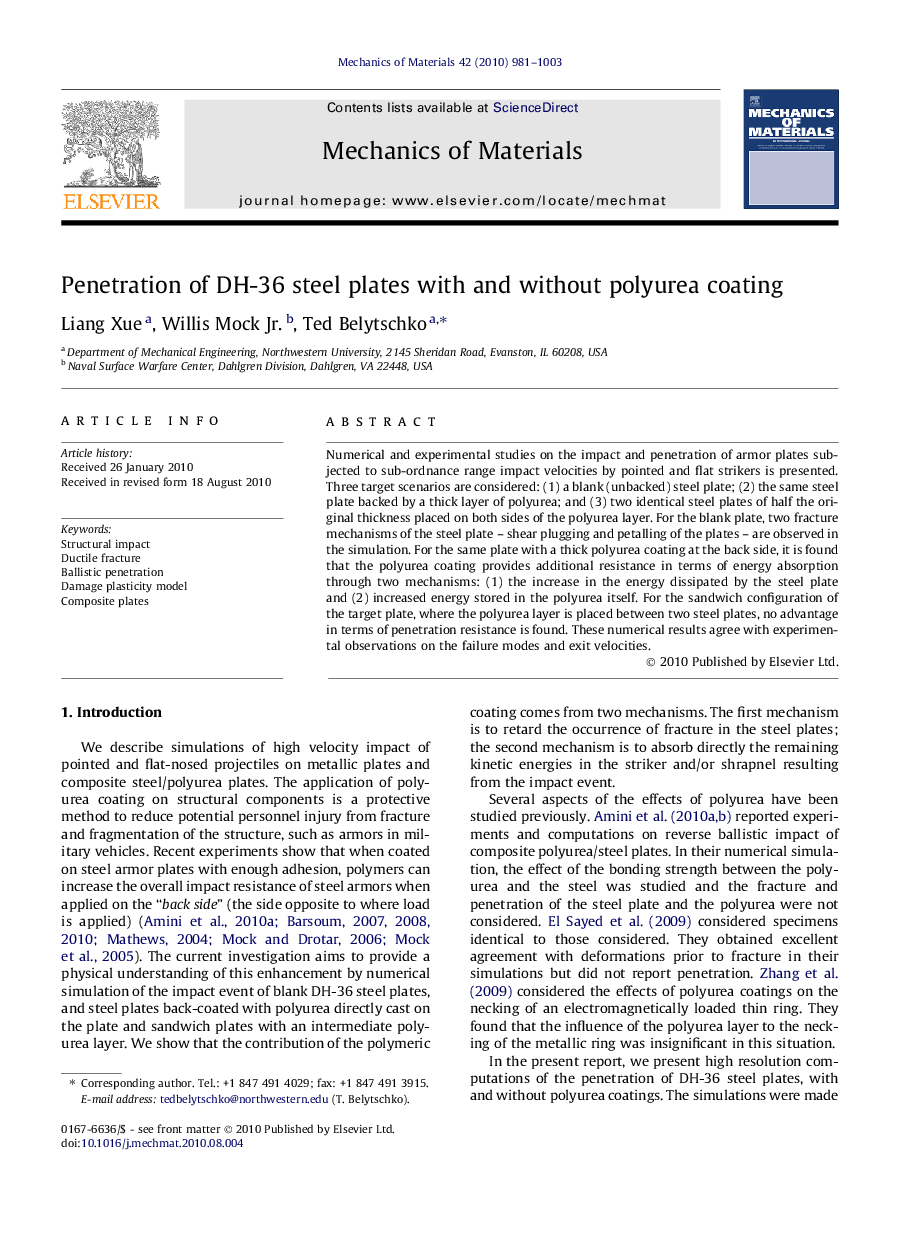| Article ID | Journal | Published Year | Pages | File Type |
|---|---|---|---|---|
| 797671 | Mechanics of Materials | 2010 | 23 Pages |
Numerical and experimental studies on the impact and penetration of armor plates subjected to sub-ordnance range impact velocities by pointed and flat strikers is presented. Three target scenarios are considered: (1) a blank (unbacked) steel plate; (2) the same steel plate backed by a thick layer of polyurea; and (3) two identical steel plates of half the original thickness placed on both sides of the polyurea layer. For the blank plate, two fracture mechanisms of the steel plate – shear plugging and petalling of the plates – are observed in the simulation. For the same plate with a thick polyurea coating at the back side, it is found that the polyurea coating provides additional resistance in terms of energy absorption through two mechanisms: (1) the increase in the energy dissipated by the steel plate and (2) increased energy stored in the polyurea itself. For the sandwich configuration of the target plate, where the polyurea layer is placed between two steel plates, no advantage in terms of penetration resistance is found. These numerical results agree with experimental observations on the failure modes and exit velocities.
